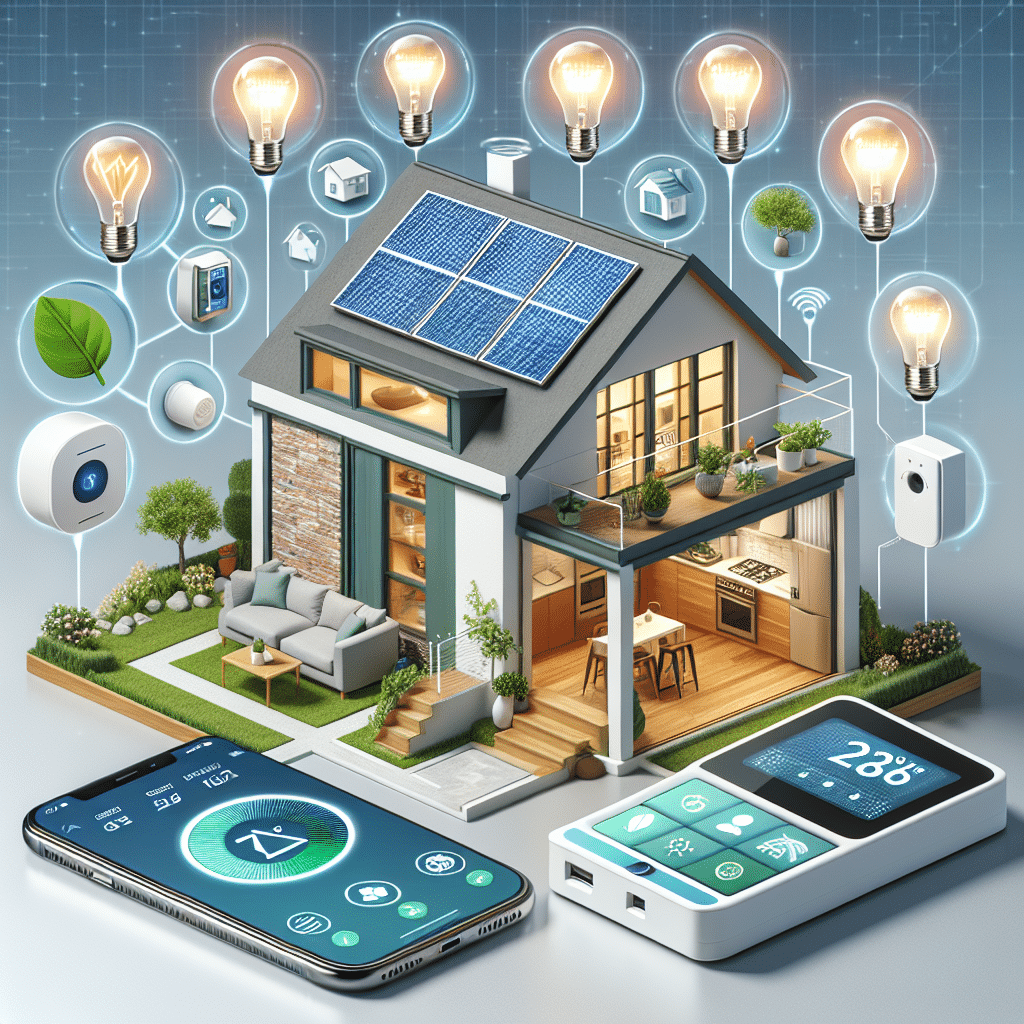Understanding Smart Sensors and Their Role in Energy-Conscious Homes
Smart sensors have emerged as pivotal components in modern energy-conscious homes. These devices actively monitor and manage energy consumption, leading to both cost savings and environmental benefits. By integrating smart sensors, homeowners can attain greater control over their energy usage, respond to real-time data, and make informed decisions for sustainable living.
Types of Smart Sensors
1. Motion Sensors
Motion sensors detect the presence or absence of people in specific areas within a home. They play a critical role in energy management by ensuring that lights and appliances operate only when needed. For instance, a motion sensor can turn off lights in unoccupied rooms, minimizing unnecessary energy consumption.
2. Temperature Sensors
Temperature sensors maintain optimal indoor climate control by monitoring and regulating heating and cooling systems. Advanced models connect with smart thermostats to adjust temperatures according to occupancy patterns, significantly enhancing energy efficiency. Homeowners can access this data through mobile applications, enabling remote adjustments.
3. Light Sensors
Light sensors gauge the natural light levels entering a home, automatically adjusting artificial lighting. By using these sensors, homeowners can maximize daylight utilization, reducing reliance on electric lighting during daylight hours. These adjustments not only conserve energy but also contribute to a more sustainable living environment.
4. Energy Monitoring Sensors
Energy monitoring sensors track energy consumption in real time. These devices provide detailed insights into usage patterns, helping homeowners identify high-consumption appliances. By analyzing this data, homeowners can make informed decisions about energy-saving appliances, shift usage times, or implement efficiency upgrades.
Benefits of Smart Sensors
Improved Energy Efficiency
Smart sensors optimize energy consumption by automating tasks based on real-time data. This management results in significant reductions in energy bills. For instance, a smart thermostat can lower heating or cooling during peak energy usage times, when costs are typically higher.
Remote Monitoring and Control
Homeowners can manage their energy use from anywhere, thanks to remote access provided by many smart sensors. Mobile applications enable real-time monitoring, allowing users to receive alerts about unusual patterns or energy spikes and take corrective actions promptly.
Environmental Impact
By adopting smart sensors, households contribute to reduced carbon footprints. Efficient energy usage leads to lower greenhouse gas emissions associated with energy production. As more homes implement these technologies, the collective impact on energy conservation becomes substantial.
Integration with Smart Home Systems
Smart sensors can seamlessly integrate into broader smart home systems, enhancing their functionality. For instance, connecting motion sensors with home security systems provides safety while optimizing energy use. When a space is unoccupied, lights not only turn off but security settings can be adjusted accordingly, ensuring comprehensive control.
Implementation of Smart Sensors
Assessment of Needs
Before engaging in the implementation of smart sensors, homeowners should assess their specific needs. This involves identifying areas where energy efficiency can be improved, such as high-use rooms or appliances.
Choosing the Right Sensors
Selecting the appropriate sensors is crucial for optimized performance. Factors to consider include compatibility with existing systems, data accessibility, and ease of installation. Many brands offer comprehensive packages that cater to different energy management needs.
Professional Installation vs. DIY
While many smart sensors are designed for easy installation, homeowners may benefit from professional installation services, especially for complex systems. Professionals ensure that sensors are optimally placed and calibrated to maximize their efficacy. Additionally, they can provide guidance on system integration.
Cost Considerations
Initial Investment vs. Long-term Savings
The initial costs of purchasing and installing smart sensors can seem substantial; however, the long-term savings often outweigh these expenses. Homeowners can expect reduced energy bills, quick returns on investment, and increased property value. Various government incentives or rebates may also be available, offsetting upfront costs.
Maintenance Costs
While smart sensors are generally low-maintenance, periodic checks are advisable to ensure optimal functioning. Homeowners should also consider potential upgrades as technology evolves, which might involve purchasing new sensors or enhancing existing systems.
Key Features in Smart Sensors
Data Analytics
Many modern smart sensors come equipped with analytics capabilities that allow homeowners to visualize their energy consumption data. This feature can identify trends, project future consumption, and provide personalized recommendations for reducing energy use.
User-friendly Interfaces
A significant benefit of smart sensors is their intuitive interfaces. Many systems are controlled via user-friendly smartphone applications, making it easy for users to monitor and adjust settings.
Integration with Renewable Energy Sources
Smart sensors play a vital role in homes utilizing renewable energy sources like solar panels. They can provide real-time data on energy production and consumption, helping homeowners maximize the use of renewable energy and minimize reliance on the grid.
Future Trends in Smart Sensors
Enhanced Connectivity
As the Internet of Things (IoT) expands, smart sensors will become even more interconnected. Enhanced connectivity allows for improved communication between devices, resulting in more synergistic energy management strategies.
Artificial Intelligence Integration
Incorporating artificial intelligence in smart sensors will lead to predictive energy management. These systems can learn user habits and automatically adjust settings for maximum efficiency without requiring user input.
Expanding Applications
Smart sensors are increasingly finding applications in various household elements from window blinds to HVAC systems. As technology continues to advance, the possibilities for smart sensor integration in homes will only expand.
Conclusion
Incorporating smart sensors into energy-conscious homes offers myriad benefits, from cost savings to enhanced living experiences. With continuous developments in technology, smart sensors will become integral in shaping sustainable future living environments. By embracing these innovations, homeowners position themselves advantageously, both economically and environmentally.
